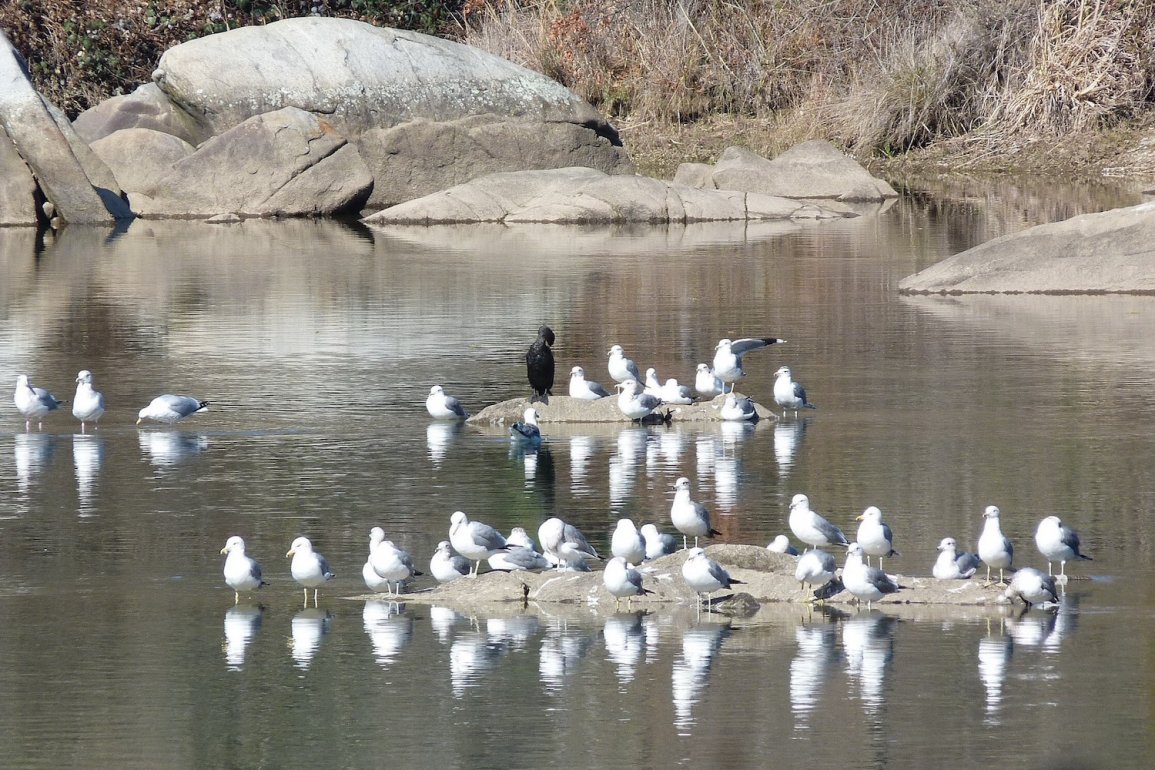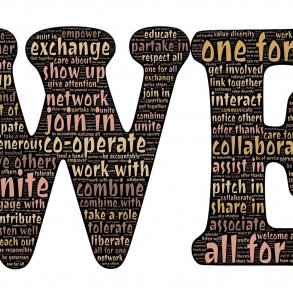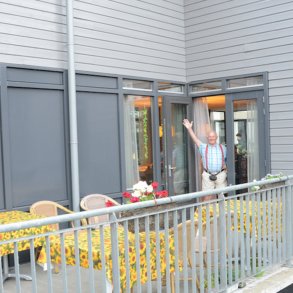By Lia Aurami for Enlivening Edge Magazine
If you’re looking for a Community of Practice to satisfy your needs and desires for professional growth and for innovating on an organizational or societal scale, there are two ways you can end up dissatisfied.
One is that you are missing a sense of community entirely. It feels like just a group, but you can’t pinpoint what’s missing. Another is that you’re feeling a wonderful sense of community, but the others don’t seem to share your drive, passion, need, for a certain kind of “practice” of new ways of being, relating, and doing together. Let’s begin an exploration of how you might move beyond those gaps between actual and potential.
What makes a group a community?
If you’re like me, you just assume that everyone understands what “community” means, and that it means the same thing in pretty much every context. Was I ever in a for a shock when I looked up the term in Wikipedia: https://en.wikipedia.org/wiki/Community If you read that entry, you might discover there is more to know about “community” than you ever imagined.
For me, it was like discovering that not all irises are purple, or not all day-lilies are orange! So many shades and purposes of community. It was dizzying! Since then I’ve been hungry for learning about communities, and I’m delighted to point you to some of the resources I’ve discovered.
 Books could be–and have been–written about what gives people a sense of community in a group, but here’s an overview from the Wikipedia article on Sense of Community:
Books could be–and have been–written about what gives people a sense of community in a group, but here’s an overview from the Wikipedia article on Sense of Community:
“Community psychologists such as McMillan and Chavis (1986) state that there are four key factors that defined a sense of community: “(1) membership, (2) influence, (3) fulfillment of individuals needs and (4) shared events and emotional connections.
“So, [for example] the participants of learning community must feel some sense of loyalty and belonging to the group (membership) that drive their desire to keep working and helping others, also the things that the participants do must affect what happens in the community; that means, an active and not just a reactive performance (influence). Besides, a learning community must give the chance to the participants to meet particular needs (fulfillment) by expressing personal opinions, asking for help or specific information and share stories of events with particular issue included (emotional connections) emotional experiences[2].”
It’s clear that something is happening, when you’re in a group and there are shared experiences that are creating a sense of coalescing into a “we,” a bonding, a depth of knowing and caring about each other, above and beyond the nominal “purpose” of the group. That seems to be the start of a sense “we are a community.” There is a singular “we,” not just a collection of “I’s.”
If you want to help shape your group into a community, there are many places to go for help. I’ve explored some of them at greater length in “What Makes a Community?” and pointed to others.
Next, you’ll need to discover whether your community is a CoP or a closely related kind of group
Your work in the world might benefit significantly—for me there was astonishing wisdom revealed—from comparing communities of practice, learning communities, communities of interest, and project teams, via the linked Wikipedia entries. Especially the first two, as they both contribute to social and organizational evolution, yet in slightly different ways.
I spend time on these distinctions, because if you can’t realize you are in the wrong kind of community for your own needs and purposes, you won’t get far. Also, if you are in a group, studying the characteristics (from these Wikipedia entries and linked resources) of the different kinds of related communities gives you knowledge, to help you build the strongest most beneficial version of your own group for its purpose.
For a quick reference here, I’d say a learning community is a group that meets regularly to study something at the same time, to gain some knowledge or expertise from the same sources. People share what they have learned on the subject. A community of interest is people who just want to talk about some shared interest, like their model of car.
A community of practice on the other hand is for active practitioners of something, not just learning alongside each other, but learning from each other, even practicing together or on one another, not simply sharing about what they know. CoP’s are often formed around professional or craft skills rather than academic material or subject-matter.
CoP’s can evolve spontaneously or be created deliberately. Communities of Practice are not a new phenomenon; this type of learning has existed for as long as people have been learning and sharing their experiences through storytelling and through occupational and professional guilds and apprenticeships.
 Project teams are similar in that they share information and experiences, but only with respect to the project; they are driven by deliverables, and they dissolve when the project is done. The purpose is creating something external rather than increasing personal expertise.
Project teams are similar in that they share information and experiences, but only with respect to the project; they are driven by deliverables, and they dissolve when the project is done. The purpose is creating something external rather than increasing personal expertise.
Are you really in a Community of Practice?
You can spot a CoP because it contains these essentials: an area of knowledge or expertise, sense of community, and shared or co-experienced active practice.
The area of expertise provides the common ground, guides the practices, and gives meaning to them.
Sense of community in the group practicing together creates the social fabric for the learning. A strong community involves layers of personal and professional interactions, and encourages trust and willingness to experiment together.
The area of expertise provides general focus for the community, but the practicing is the specific focus around which the community develops, shares and maintains its core of knowledge.
How I spotted Enlivening Edge as a Community of Practice
I was even more excited about Communities of Practice when I realized that the group that produces EE Magazine is in fact a CoP. We practice a number of radically different ways of being, relating, organizing, and doing. And we are consciously leveraging our practice to support and nourish an eco-system of related groups, communities and organizations aligned with our own new ways of living and working together.
In what ways is EE a Community of Practice?
Our “area” is our ever-evolving understanding of the worldview pointed to in descriptions of Teal/Yellow/Integral ways of being, relating, and doing. Our area also includes our determination
- to practice that in our daily lives and
- to support and nourish others, in every scale of human interaction, who want the same.
Of course, that’s a big vision, so we specialize in our own ecosystem of organizations that practice next-stage ways.
We take “Teal” seriously as an entire worldview, not just the 3 particular aspects that pertain to organizations. Teal is basically an identity and a reality that result in particular ways of relating in every aspect of life. We study, we learn, and we practice and experiment, with Teal ways.
- How does a Teal organization go about getting people involved in their work?
- How can this conflict be used co-creatively for our shared purpose, by perhaps synergizing our differences rather than just negotiating them or escalating them?
- What is the best relationship, right now here, between self-management/role autonomy and teamwork?
These and similar questions inform our choices daily as we practice our working together.
Of course we recognize that each individual and each organization operates from all the stages of worldviews/consciousness at various times in various circumstances—sometimes from immaturity and sometimes because a particular stage offers the best resources for the purpose and situation at hand.
So Teal isn’t a dogma or a requirement. Just our “practice” as a community.

Would people who fall in love with each other as whole people working together satisfy your sense of community? That satisfies ours, quite a lot!
And, EE has a secret edge in being a Community of Practice: our Founder, George Pór, has been a world-class expert in the topic for decades.
And then…..
If your group isn’t feeling like a community, you might check whether some others there share your desire for “more.” If so, how could you all introduce more of the qualities of a community into your group interactions?
If you’re actually in a Community of Practice but it’s not as powerful and helpful as you and others would like there is a great deal of help available in making the CoP serve your intentions, purposes, and passions. Here are some ideas and learning-resources, in Part 3 of this series.
If you discover your Community is not the Community of Practice you are yearning for, you can found one or find one, on a small or large scale.

Lia Aurami: This article emerged from my passion for optimizing the chances of success of transformative changes, especially using the power of shared consciousness, including collective intelligence and wisdom, which are so well-embodied through Communities of Practice. It helps that I am a Partner in Enlivening Edge itself as a community of practice for Teal worldview consciousness.




